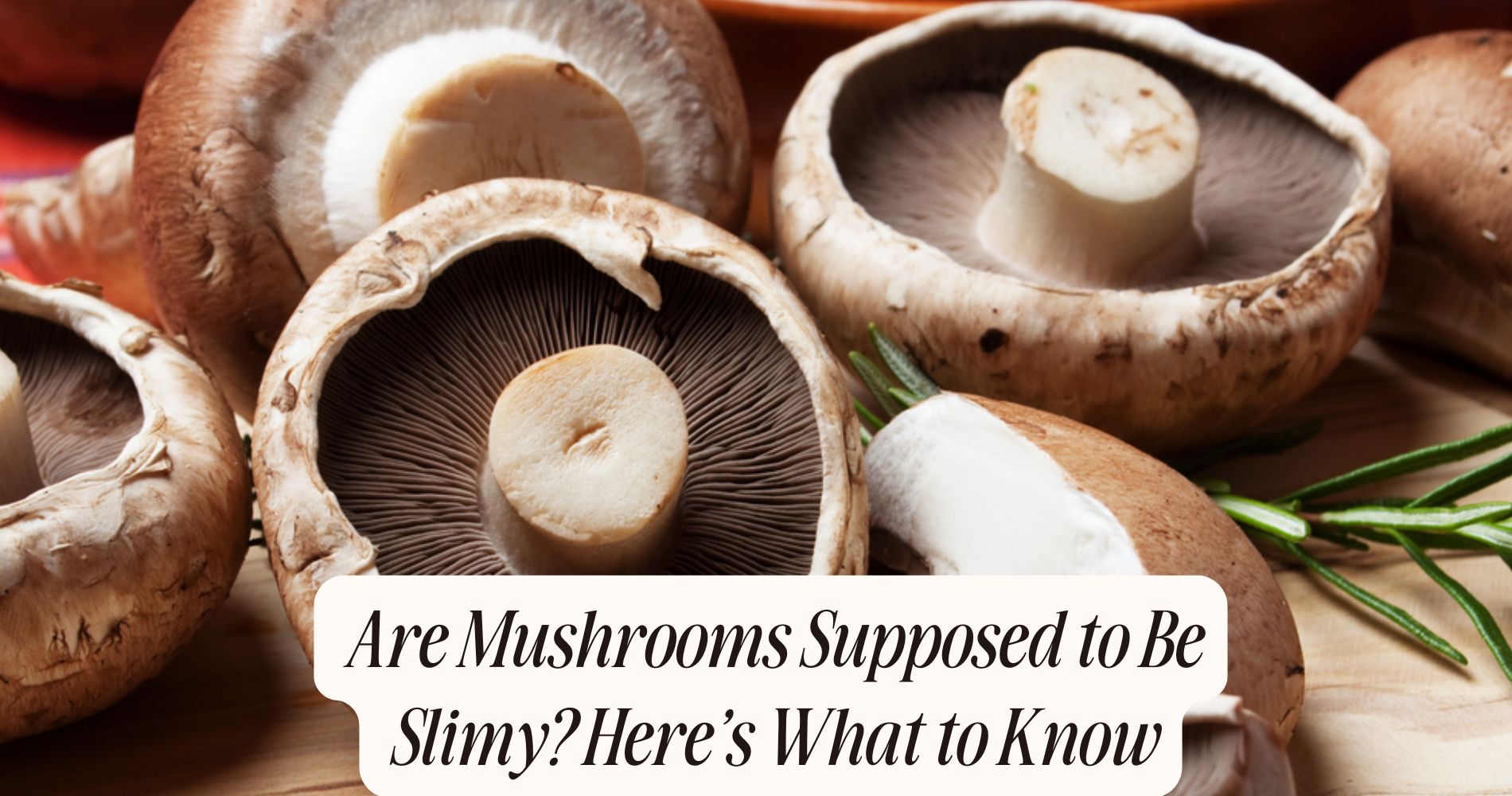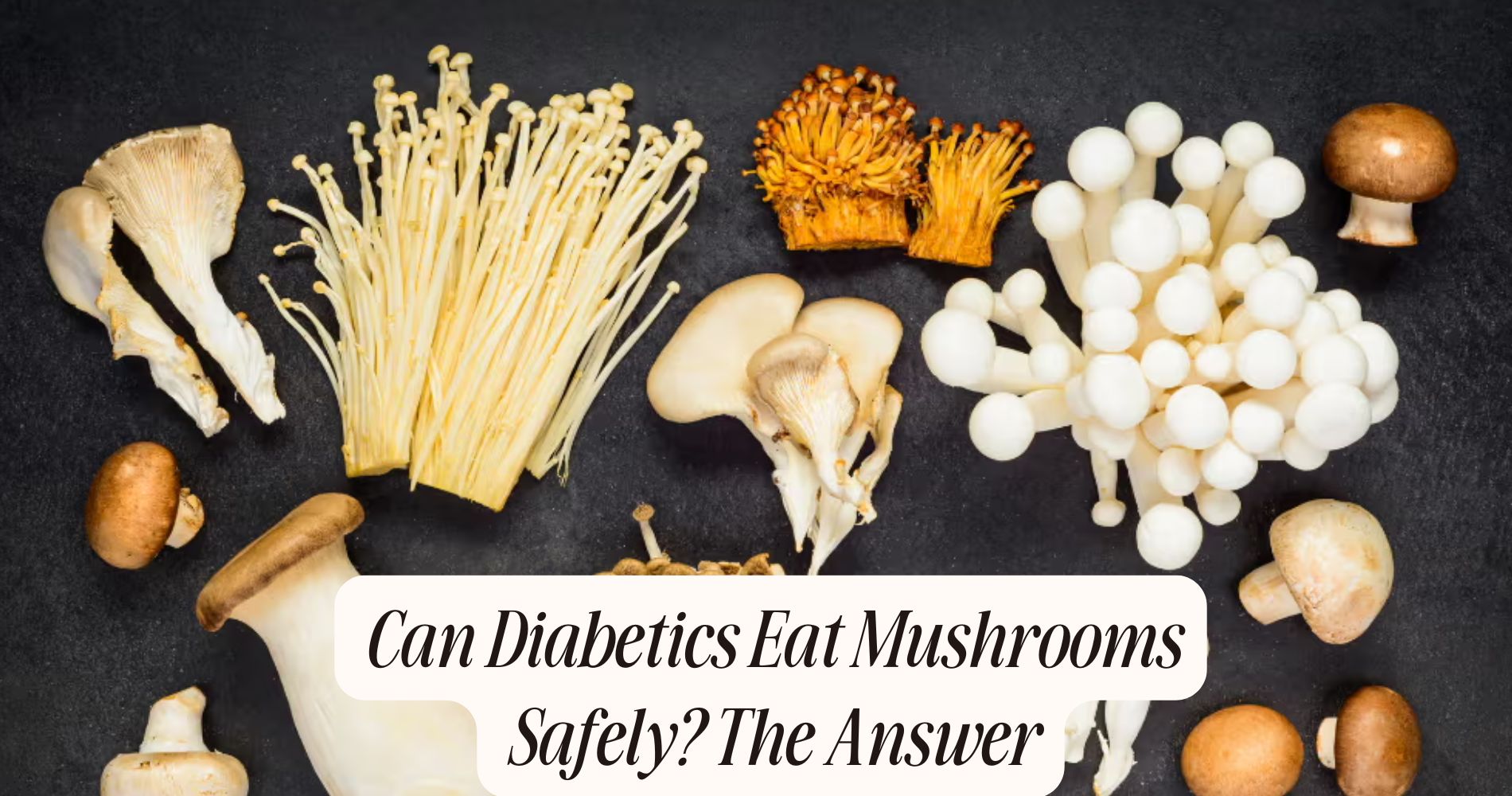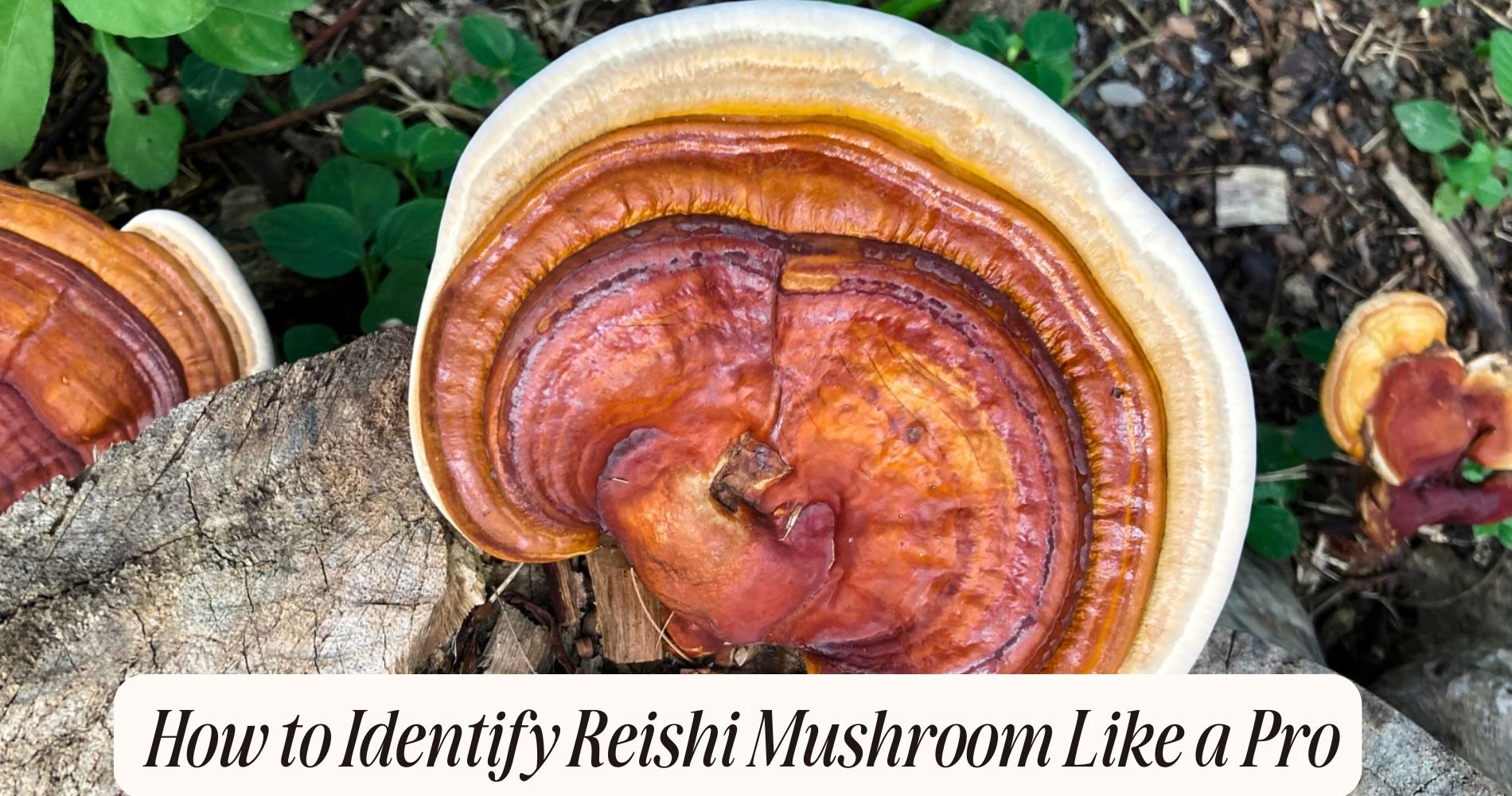
Are Mushrooms Supposed to Be Slimy? Here’s What to Know
Are mushrooms supposed to be slimy? Mushrooms shouldn't be slimy; that texture typically indicates spoilage. Fresh mushrooms should feel firm and dry, with moisture being an enemy of quality. Sliminess often results from improper storage, leading to excess moisture and bacterial growth. If you notice dark spots or a foul smell, it's best to discard them. Each type of mushroom has a distinct texture, from the crisp enoki to the meaty portobello, but all should maintain freshness. Proper storage at low humidity is vital for keeping them in ideal condition. There's more to know about selecting and maintaining mushrooms, so keep exploring this topic.
Understanding Mushroom Texture
When you explore the world of mushrooms, understanding their texture is essential for both culinary and foraging purposes. The anatomy of a mushroom comprises several key components: the cap, gills, stem, and sometimes a ring or volva. Each part contributes to the overall texture, which can vary greatly among species.
For example, some mushrooms like shiitakes have a firm, meaty texture, while others, like enokis, are delicate and crisp.

Texture variations can also be influenced by freshness and preparation methods. Fresh mushrooms tend to have a springy, resilient feel, whereas older ones might become soft or spongy. During cooking, heat can change the texture, making mushrooms tender and releasing moisture, which can enhance their flavor profile.
Understanding these nuances helps you select the right mushrooms for your dish or foraging adventure. Knowing how to assess texture, from the smoothness of a portobello cap to the fibrous nature of a chanterelle stem, allows you to make informed choices.
Ultimately, recognizing these texture variations enriches your culinary skills and enhances your foraging experience, ensuring you appreciate the diversity of mushrooms fully.
Common Causes of Sliminess
When examining mushroom sliminess, moisture retention plays an important role.
High humidity levels or improper storage can lead to excessive moisture, making mushrooms feel slimy.
Additionally, sliminess can indicate spoilage, so recognizing these factors is essential for maintaining quality.
Moisture Retention Factors
Mushrooms can easily fall victim to excess moisture, resulting in a slimy texture that many find unappetizing. Understanding moisture retention factors is essential for effective moisture regulation. When you store mushrooms in a high-humidity environment, they absorb moisture, leading to that undesirable sliminess.
Moreover, the type of packaging can greatly impact moisture retention. If mushrooms are stored in plastic, they can trap moisture, creating a soggy atmosphere. Ideally, you should opt for breathable materials, like paper bags, to allow excess moisture to escape.
Environmental impact also plays a role. Mushrooms grown in overly damp conditions may already have a higher moisture content, making them more prone to that slimy texture.
In addition, when harvested and transported, if they aren't kept in ideal conditions, they can accumulate moisture during transit, compounding the problem.
To prevent sliminess, you need to be mindful of both storage methods and the environment in which you're purchasing your mushrooms. By controlling these factors, you can maintain a firmer, more appealing texture in your culinary creations.
Spoilage Indicators
Sliminess in mushrooms often signals spoilage, and recognizing the indicators can help you avoid unappetizing specimens. When you notice slimy mushrooms, it's essential to assess them for further spoilage signs. One primary cause of this texture is excess moisture, which encourages bacterial growth. If your mushrooms feel sticky or have a wet appearance, they may have started decomposing.

Another spoilage sign is discoloration. If you see dark spots or a significant color change from their usual hue, it's likely they've gone bad. Additionally, a strong or unpleasant odor can indicate that the mushrooms are no longer fresh. Fresh mushrooms should have a mild, earthy scent, while foul-smelling ones suggest bacterial activity.
Keep in mind that even slight signs of sliminess can mean that the mushrooms are past their prime. Storage conditions also play a role; warm, humid environments accelerate spoilage.
Always inspect your mushrooms before use, and when in doubt, it's safer to discard any that exhibit these spoilage signs. By doing so, you'll guarantee your meals are both delicious and safe.
When Slimy Is Unsafe
When mushrooms become slimy, it often signals spoilage, which can pose health risks.
You need to pay attention to storage conditions, as improper handling can accelerate this process.
Understanding safe handling practices is essential to guarantee your mushrooms remain fresh and safe to eat.
Signs of Spoilage
Although fresh mushrooms can sometimes exhibit a slight moisture on their surface, a distinctly slimy texture is a clear indicator of spoilage. When you encounter this sliminess, it's essential to recognize that it's not just a minor issue; it signals that the mushrooms are no longer safe to consume. Spoilage occurs due to the growth of bacteria and fungi, which thrive in damp conditions.
During your freshness checks, look for other signs of spoilage, such as discoloration, unpleasant odors, or visible mold. If any of these elements are present alongside the slimy texture, it's best to discard the mushrooms. Consuming spoiled mushrooms can lead to foodborne illnesses, making spoilage prevention a priority in your kitchen practices.
To maintain the quality of your mushrooms, always inspect them before use and store them properly. Keeping them in a dry, cool environment can help extend their shelf life.
Remember that the key to enjoying mushrooms safely lies in recognizing these signs of spoilage and taking action promptly. By staying vigilant, you can guarantee that your culinary experiences remain both delicious and safe.
Storage Conditions Matter
Proper storage conditions are vital for maintaining the quality of mushrooms and preventing spoilage. Mushrooms thrive in specific environments, and failing to provide adequate temperature control and humidity levels can lead to undesirable sliminess.
Ideally, mushrooms should be stored in a cool environment, typically between 34°F and 38°F. Temperatures above this range can accelerate spoilage, resulting in a slimy texture that indicates decay.
Humidity levels also play a significant role. Mushrooms require high humidity to stay fresh, but excessive moisture can lead to slime formation. Aim for a humidity level of around 90%, using breathable packaging like paper bags to balance moisture retention and airflow.

Plastic bags trap moisture, creating a breeding ground for bacteria and fungi.
Regularly check your mushrooms for signs of spoilage, especially if they've been stored for a while. If you notice any sliminess, it's a clear indicator that the mushrooms have surpassed their prime.
Proper storage not only extends shelf life but also guarantees you enjoy the mushrooms at their best quality. By adhering to these guidelines, you can prevent sliminess and fully appreciate the texture and flavor that fresh mushrooms offer.
Safe Handling Practices
Mushrooms can quickly turn from a culinary delight to a health hazard if not handled correctly, especially once they exhibit a slimy texture. This sliminess often indicates spoilage, increasing the risk of foodborne illnesses. When you notice this change, it's essential to discard the mushrooms rather than attempt to salvage them.
To guarantee safety, focus on proper cleaning mushrooms before use. Gently brush off any dirt using a soft brush or cloth, avoiding excessive moisture, as water can promote decay. If necessary, rinse quickly under cold water and dry them immediately with a paper towel.
Employ effective handling techniques throughout the entire process. Always use clean utensils and cutting boards to prevent cross-contamination, especially if you're working with raw meat or poultry.
Store mushrooms in a breathable container, like a paper bag, to maintain appropriate humidity levels while allowing airflow.
Types of Mushrooms and Their Textures
When exploring the diverse world of fungi, you'll encounter a remarkable variety of mushrooms, each exhibiting unique textures that can influence culinary applications and sensory experiences.
Understanding these texture differences among edible varieties is essential for selecting the right mushroom for your dishes.
For instance, white button mushrooms are known for their firm, smooth texture, making them a versatile choice for salads and soups.
In contrast, shiitake mushrooms present a chewy texture that adds depth to stir-fries and broths.
On the other hand, oyster mushrooms have a delicate, velvety feel, which lends itself well to sautéing or adding to creamy sauces.
Portobello mushrooms, with their meaty, robust structure, can serve as a satisfying meat substitute in various recipes.
Meanwhile, enoki mushrooms are characterized by their thin, crisp texture, perfect for garnishing dishes or adding crunch to salads.
Proper Storage for Freshness
Selecting the right mushrooms for your culinary endeavors is just the beginning; ensuring their freshness through proper storage is equally important. To maintain the quality of your mushrooms, you'll need to focus on two key factors: the best containers and temperature control.
Mushrooms thrive in a cool, dark, and dry environment. For ideal storage, use breathable containers such as paper bags or perforated plastic containers. These options allow for air circulation, preventing moisture buildup that can lead to slimy textures. Avoid airtight containers, as they trap humidity and speed up spoilage.

Temperature control is also essential. Store your mushrooms in the refrigerator, ideally in the vegetable crisper drawer, which maintains a stable environment. The ideal temperature for storing mushrooms is between 35°F and 40°F.
Avoid placing them near fruits, especially apples or bananas, as these emit ethylene gas, which can hasten decay.
Cooking Tips for Mushrooms
Incorporating mushrooms into your cooking can elevate dishes with their unique flavors and textures. To make the most of these fungi, it's vital to understand effective sautéing techniques. Start by choosing the right type of mushroom for your dish. Varieties like cremini, shiitake, or portobello each offer distinct taste profiles that can complement or contrast with other ingredients.
When sautéing, slice your mushrooms uniformly to guarantee even cooking. Heat your pan adequately before adding oil; this helps achieve that desirable golden-brown color. Avoid overcrowding the pan, as this can lead to steaming rather than sautéing, which diminishes flavor. Stir occasionally for even browning.
Flavor pairings are important. Mushrooms work wonderfully with garlic, thyme, and shallots. Consider adding a splash of white wine or balsamic vinegar during the last few minutes of cooking to enhance their umami richness.
For a heartier dish, combine mushrooms with proteins like chicken or beef, or toss them into pasta for added depth.
Signs of Spoilage to Watch For
Mushrooms can quickly lose their freshness, so it's crucial to identify signs of spoilage before cooking. Understanding mushroom freshness indicators helps you make informed decisions about what to use.
First, inspect the surface of the mushrooms. If they feel slimy or sticky, that's a clear sign of spoilage. Fresh mushrooms should be dry and firm to the touch.
Next, observe the color. Fresh mushrooms have a vibrant appearance, while those that are starting to spoil may display dark spots or a dull coloration. Pay attention to any unusual odors as well. A strong, unpleasant smell indicates that the mushrooms have gone bad.

Additionally, use spoilage detection methods like checking for wrinkles or shriveling. Fresh mushrooms should maintain a plump shape; if they're starting to shrink, it's time to reconsider using them.
Finally, always check the expiration date or the "best by" date on the packaging. While some mushrooms may still be usable after this date, it's better to err on the side of caution.
Enjoy Mushroom Benefits Without the Hassle with SUPER MUSHROOM GUMMIES
If you’re questioning "Are mushrooms supposed to be slimy?" and want a reliable way to enjoy their benefits without worrying about freshness, try Well Gummies' SUPER MUSHROOM GUMMIES. These vegan gummies combine 10 functional mushroom types, offering immune support, mental clarity, and sustained energy—all in a convenient, shelf-stable form. With a fresh wild berry flavor, they’re delicious, easy to take, and eliminate the need for proper storage or preparation. Say goodbye to slimy mushrooms and hello to the power of functional nutrition with SUPER MUSHROOM GUMMIES!
Frequently Asked Questions
Can Slimy Mushrooms Still Be Cooked Safely?
Slimy mushrooms can still be cooked safely, but you should assess their freshness first. If they smell bad or have significant discoloration, it's best to discard them for ideal cooking safety and flavor enjoyment.
Do Different Cooking Methods Affect Mushroom Texture?
Yes, different cooking methods greatly affect mushroom texture. Sautéing techniques often yield a tender, slightly crispy finish, while roasting methods enhance their natural flavors, resulting in a firmer, more concentrated texture that elevates your dish.
Are There Health Benefits to Eating Mushrooms?
Eating mushrooms offers various health benefits due to their high nutritional value. They're low in calories, rich in vitamins and minerals, and versatile for culinary uses, enhancing dishes while supporting your overall well-being and immune health.
How Can I Tell if Mushrooms Are Organic?
To tell if mushrooms are organic, check for organic certification labels. These indicate they're grown using sustainable farming practices, minimizing chemical use. Look for local sources that prioritize organic methods for the freshest options.
Can I Freeze Mushrooms to Extend Their Shelf Life?
You can freeze mushrooms to extend their shelf life effectively. Use proper freezing techniques, like blanching first, to guarantee ideal mushroom preservation. This prevents texture changes and maintains flavor, allowing you to enjoy them later.
Conclusion
To sum up, while some mushrooms can naturally exhibit a slimy texture, it's crucial to distinguish between normal characteristics and signs of spoilage. Understanding how to store and prepare mushrooms properly can enhance their flavor and safety. Always check for unusual odors or excessive sliminess, which may indicate they've gone bad. By being aware of these factors, you can enjoy mushrooms confidently, ensuring they're both delicious and safe to eat.




